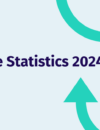
Perhaps your initial understanding of accessibility is in the form of physical access (for example, installing ramps). However, Global Accessibility Awareness Day (GAAD) focuses specifically on digital accessibility and inclusion by sparking conversations, educating, and raising awareness.
The internet is undeniably fully integrated into our lives. Every day we carry out millions of tasks that utilise the technology of the web; searching for information, using maps, streaming the latest binge-worthy series, or attending hours of online meetings via video platforms. It’s a brilliant, inspiring tool that opens up the world at the touch of a button, and has facilitated flexible working during the pandemic. But many websites still aren’t fully accessible.
So why is digital accessibility so important?
Good for business
Improving your website’s accessibility is a business-savvy move.
It’ll improve your page’s performance thanks to decreased page loading times, offering users an improved experience. Many accessibility updates should barely impact – or could even improve – the efficiency of your website.
These positive changes can help with your brand and reputation. If you’re known as an inclusive and forward-thinking organisation, and actively practice and demonstrate this on your website, it will help to secure a positive response from your users.
An accessible website is also great for online visibility. The changes you need to make could offer better search engine optimisation (SEO) for your site, making your content more visible to your desired audience and helping more people to find you. Better SEO usually equals better engagement and, depending on your purpose, more business. So, by default, it’ll likely improve your profits, too!
You’ll also be future-proofing your online presence. With more and more requirements to meet and the ever-evolving nature of the internet, it’s better to be ahead of the curve than getting caught out and left behind. If you want to be known as forward-thinking, let your website do the talking.
More than just a marketing campaign
The above all sounds great, doesn’t it? There are clearly so many benefits to embracing digital accessibility for organisations, and it makes sense to make these changes.
However, the real motivation behind your digital accessibility overhaul shouldn’t be about profit, or brand, or metrics.
Improving the accessibility of your website should be about curating and cultivating a truly inclusive organisation, regardless of ROI. It should be about the individuals who are trying to access your information, work with you, or engage with your organisation.
Accessibility is about making all activities, ideas and opportunities fairly available to all, regardless of disability or background. It’s about true equality and inclusivity, and breaking down any barriers that might prevent someone from being able to participate in or experience something.
Digital accessibility means that everyone should be able to use a website or experience technology in the same way. While it has become more of a focus in recent years, there’s still a long way to go if we are to fully integrate accessibility into everything we do online. According to the 2020 WebAIM Million Report, 98.1% of surveyed homepages have at least one WCAG (Web Content Accessibility Guidelines) 2.0 failure. This means most homepages have at least one element that hinders access to information or content for anyone with a disability.
Issues can range from low-contrast text (meaning it could be impossible to read) to missing ALT text on images (which describes images for those using reading software). Many of these failures are easy to fix, and won’t take too much time to implement, but we’re still seeing millions of websites and organisations ignoring the needs of all of their users.
One recent example is Network Rail’s response to the death of HRH Prince Philip, the Duke of Edinburgh. In a display of public mourning along with some other rail companies in April 2021, they temporarily formatted their website in greyscale. This decision caused significant issues, complaints, and concerns about awareness from users and disability charities alike. By removing colour from the entire website, the company made the user journey almost, if not totally, impossible for visually impaired users. Even employees reported having difficulty reading information when responding to confused queries on Twitter. Digital accessibility had not been prioritised highly enough by the team behind the change, and they ended up excluding countless customers and users, creating a very unwelcoming online experience and possibly impacting people’s travel experiences.
Going offline
Digital accessibility isn’t just about websites, either. Consider the technology colleagues and employees use as part of their job. Think about whether, for example, remote working is truly accessible to all; could video meetings be excluding workers with hearing or sight problems? Employees with disabilities may need extra support and investment in specialist equipment or software to enable them to work at an equal level as their colleagues.
It’s tempting to focus on the business benefits of improving your digital accessibility – but, ultimately, make sure that your decisions are driven by the people, not the profit, and your focus is on equality, and not on earnings.





